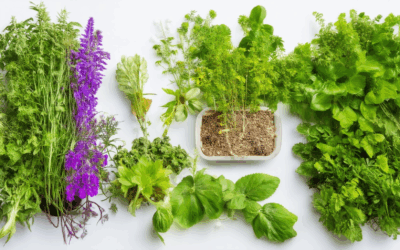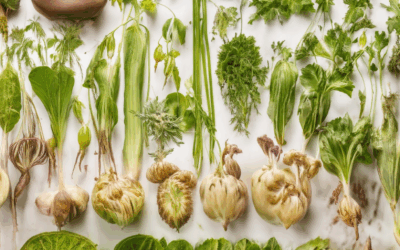Heirloom seeds represent a treasure trove of biodiversity and history, offering a unique connection to nature and culinary traditions. For many, the allure of collecting and preserving these timeless seeds lies in their ability to thrive through generations, ensuring food security and enriching our gardens year after year. However, mastering the art of heirloom seed collection requires careful consideration, from storage solutions to preservation techniques, and even navigating legal and ethical challenges. In this comprehensive guide, we delve into the essential tips, tricks, and considerations that will empower you to successfully collect and preserve these invaluable seeds. Whether you’re a seasoned gardener or new to the world of seed-saving, this article will walk you through the best practices, tools, and resources to ensure your heirloom seed collection thrives for years to come.
Key Takeaways
– Heirloom Seeds May Be Legal or Illegal Depending on Circumstances: Patented or proprietary seeds can be illegal to save and distribute without authorization, while open-pollinated heirlooms are generally legal.
– Replanting Seeds Can Be Restricted by Law: Utility patents, plant variety protection, and certification requirements make unauthorized replanting illegal for commercial purposes.
– Heirloom Tomatoes Are Completely Legal: They are open-pollinated, suitable for organic farming, and legally cultivated and consumed globally.
– Legal Considerations Are Essential: Always verify seed origins and check local regulations to ensure compliance with intellectual property laws and avoid legal consequences.
Is It Better to Store Seeds in Paper or Plastic Bags?
When deciding whether to store seeds in paper or plastic bags, several factors come into play:
- Moisture Control: Paper bags allow seeds to “breathe,” helping to evaporate any residual moisture, which prevents spoilage. Plastic bags, on the other hand, trap moisture, which can lead to mold growth and seed degradation.
- Breathability: Paper bags are preferable because they allow seeds to stay dry by allowing moisture to escape, whereas plastic bags can create a humid environment that is unsuitable for long-term storage.
- Storage Environment: Proper storage conditions are crucial. While paper bags are generally better for seed storage, ensure they are made from thick, high-quality paper to prevent tearing and maintain breathability.
- Alternative Storage Methods: Consider using glass containers or silica packets for added moisture protection, especially if you opt for paper storage.
For optimal seed storage, choose paper bags or glass containers to maintain dryness and prevent spoilage, ensuring your seeds remain viable for planting.
Throwing Down Flower Seeds
While it may seem simple to scatter flower seeds across your yard or garden, successful growth requires careful planning and preparation. Here’s a step-by-step guide to ensure your flower seeds thrive:
- Soil Preparation: Clear the area of debris, weeds, and rocks. Loosen the soil to allow proper drainage and root development. Test your soil pH to ensure it’s suitable for the specific flowers you’re growing.
- Seed Type: Choose the right flower seeds for your climate and soil conditions. Annuals, perennials, and wildflowers each have unique requirements. Research which variety works best for your location.
- Location Selection: Select a spot that receives adequate sunlight (most flowers need full sun to partial shade) and consistent water access. Some flowers prefer dry conditions, while others require regular watering.
- Sowing Time: Plant seeds during the cooler parts of the year, typically in late spring or early fall, depending on your local climate. Early sowing ensures establishment before winter.
- Fertilization: Apply a balanced fertilizer or compost at planting time to enrich the soil. This helps promote healthy root growth and flowering.
- Maintenance: Weed regularly to compete with the new seeds and apply mulch to retain moisture and suppress weeds. This creates a favorable environment for germination and growth.
- Patience is Key: Understand that it may take several weeks for flowers to emerge. Monitor the soil moisture and provide additional water if needed during dry spells.
For more tips and resources on successfully growing flower seeds, visit our main guide or explore our flower seed collection .
Don’t forget to check out our competitor resources for additional insights and compare notes with fellow gardeners on this popular platform .
Should I Freeze My Heirloom Seeds?
Deciding whether to freeze your heirloom seeds involves considering factors like seed viability, storage conditions, and your specific needs. Here’s a structured approach:
- Seed Viability: Freezing can extend seed longevity, especially useful for long-term storage or exchanging seeds with others.
- Drying First:** Before freezing, ensure seeds are thoroughly dried to prevent moisture-related issues like mold or rot. Consider using silica gel for added protection.
- Storage Conditions:** Store seeds in an airtight container in a freezer set to the coldest setting (-18°C/-28°F) to prevent ice buildup and maintain viability.
- Freezing vs. Drying:** While freezing can be effective, it’s often unnecessary if seeds are to be used shortly. Drying may suffice for immediate use.
- Longevity:** Frozen seeds can remain viable for several years under optimal conditions, though monitor for signs of aging periodically.
Consider your needs: freezing is beneficial for long-term storage or seed sharing, but drying might suffice if you plan to use seeds soon. Choose the method that aligns with your goals for preserving these precious heirlooms.
Is It Illegal to Save Heirloom Seeds?
Saving heirloom seeds can be legal or illegal depending on the specific circumstances and the nature of the seeds involved. Here’s a breakdown:
- Patented or Proprietary Seeds :
Seeds that are patented or otherwise owned by corporations may fall under intellectual property laws. Saving and distributing such seeds without authorization can be illegal. This applies particularly to hybrid or genetically modified seeds that have been developed with significant investment. - Open-Pollinated Seeds :
Open-pollinated heirloom seeds, which are not subject to patents, are generally legal to save and share. These seeds rely on natural pollination and do not involve controlled breeding or intellectual property rights. - Non-GMO Heirlooms :
Non-genetically modified heirloom seeds may still be subject to restrictions if they are part of a protected variety or have been developed through controlled propagation methods. It’s essential to verify the origin and ownership of these seeds before saving. - Regional Regulations :
Local laws and regulations may also impact seed-saving practices. Some jurisdictions have specific rules regarding seed propagation and distribution, so checking local guidelines is advisable.
To comply with legal requirements, consider purchasing heirloom seeds from reputable sources that offer proper licensing when necessary. This helps ensure that you are not infringing on intellectual property rights while supporting legitimate trade practices. 1
Why is Replanting Seeds Illegal?
Replanting seeds is restricted due to a combination of intellectual property laws and regulatory frameworks aimed at protecting the rights of seed developers and companies. Here’s a breakdown of the key reasons:
- Utility Patents : Seeds can be protected under utility patents, which grant exclusive rights to the seed’s sale, distribution, and use for 20 years. This prevents unauthorized replanting for commercial purposes.
- Plant Variety Protection Act (PVPA) : Under the PVPA, seed developers hold exclusive rights over their creations. Farmers may replant seeds for non-commercial use but cannot sell or distribute them without permission.
- Terminator Technology : Some seeds are genetically modified to be sterile, further limiting their ability to be replanted.
- Certification Requirements : Legal seeds must be certified, involving testing for purity and quality. Unauthorized replanting can lead to legal consequences.
These measures balance intellectual property rights with agricultural practices, supporting investment in research and development while addressing economic and environmental considerations.
Understanding the Legality of Heirloom Tomatoes
Heirloom tomatoes are not illegal. They are a popular crop among gardeners and food enthusiasts due to their unique flavors and historical significance. These tomatoes are typically open-pollinated, meaning they can be propagated from seeds without synthetic chemicals, making them suitable for organic gardening practices.
While heirloom tomatoes may have specific regulations in certain regions regarding cultivation or sale, they are generally legal in most areas. There is no universal law that bans their growth or consumption. It’s important to note that heirloom tomatoes are often confused with hybrid varieties, but they are distinct and legally permissible.
In summary, heirloom tomatoes are perfectly legitimate and widely available, appreciated for their rich history and culinary benefits.
- Heirloom tomatoes are open-pollinated and suitable for organic farming.
- They are legally cultivated and consumed globally.
- There are no laws outright banning their growth or distribution.
- Common misconceptions may arise due to confusion with hybrid varieties.
Conclusion: Heirloom tomatoes are not illegal and remain a cherished crop worldwide.








0 Comments